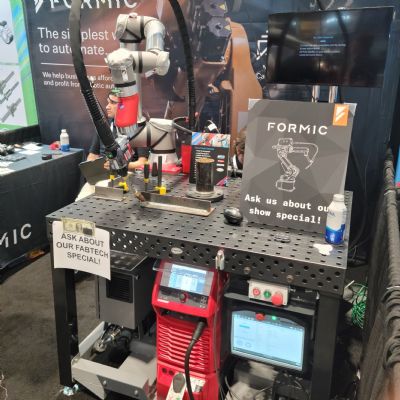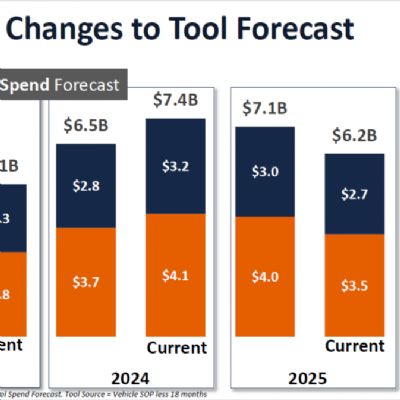Additionally, Harbour will dig into the automotive and tooling forecasts, as well as the performances of stampers and die shops. She’ll drill down into key data collected through the PMA Metalforming Insights surveys (powered by Harbour IQ), discussing trends in throughput, efficiency, profitability, quoting and hit rate, among other datapoints.
“This year has been challenging for most manufacturers with demand softening,” Harbour says. “That said, there are many in the metal forming industry that performed well. We will take a look at best-in-class performance and key areas to focus on to move your company into the top performer category.
“With chaos becoming a way of life,” she adds, “it becomes increasingly important that leadership focus on the aspects of business that can be controlled and have the flexibility to act and/or react quickly. Those that can achieve this will be the winners and generate sustainable and profitable growth.”
Transfer Automation: Simulation Can Fuel Worldclass Stamping
Ever mutter these words, or hear them around the floor?
“We don’t have time for that, we’re way behind schedule!”
Or “There is no way this job will ever run at the quoted stroke rate.”
“These phrases are uttered in almost every major production facility in the world,” shares conference speaker Corey Chamberlain from T-Sim Solutions. “Many metal stampers work two or three shifts, six or seven days a week, burning out their employees and paying thousands of dollars in overtime.
“But there is hope,” he adds, “as proven techniques and strategies can take much of that pain away. If you have transfer presses and can relate to any of the common issues above, join us to learn how to use transfer-simulation software to reduce stress in your workplace and become more profitable than you have ever been.”
This presentation, says Chamberlain, will cover techniques and strategies for increasing overall equipment effectiveness and freeing up capacity in current equipment. Attendees will learn how to verify key information about their press lines, select and prioritize ideal projects to optimize (“low-hanging fruit,” he says), and how to identify and fix common issues that often limit production.
Also on tap: how to determine a realistic production rate before building hard tooling; strategies for avoiding common mistakes in tooling design that limit production; and how to equip suppliers with clear expectations, to help ensure program success.
Pressroom Applications for Robots, Cobots and More
 Continuing the automation discussion, Will Healy from Universal Robots tackles a significant sore spot for many metal formers that have worked so hard to optimize press speed, and now struggle to keep up with part handling—destacking and bin picking specifically.
Continuing the automation discussion, Will Healy from Universal Robots tackles a significant sore spot for many metal formers that have worked so hard to optimize press speed, and now struggle to keep up with part handling—destacking and bin picking specifically.
“Metal formers around the world struggle with high operator turnover, missed deadlines and idle equipment due to open positions,” says Healy. “Forced overtime and temporary worker services are creating burnout and costly mistakes in the press shop. Automation is the often-touted solution to all of these challenges, but knowing where to start and what investment will pay off can feel overwhelming.”
To help sort through the options, Healy will dive into the types of automation investments that actually pay off for metal stampers, with a focus on moving material to the first hit and then through the process. On Healy’s agenda: automated material delivery, automated scrap removal and other dunnage applications utilizing autonomous mobile robots.
“We also will discuss how larger presses can be automated using automated transfer systems, automated destacking and robotic press tending,” he says, “and also how stampers can automate many manual tasks around smaller C-frame presses using collaborative robots (cobots).”
Healy also plans to review some powerful advancements in machine vision, artificial intelligence and bin-picking technology that promise to make press tending possible where previously thought impossible.
|
Learn more at www.pma.org/stamping-conference
Early-Arrivals Meet and Greet, Ole Red, 300 Broadway
|
“I’ll share some real-world case studies and stories to illustrate how automation is improving revenue per employee, boosting parts per shift, increasing quality and making work more engaging for press operators,” he adds. “Bottom line: When operators are more engaged, we have less mistakes and less turnover in positions. Success comes from understanding the challenges of the frontline workers first, truly following your processes, and then selecting products and technology to improve those challenges and processes.”
Let’s Get Smart About Lubrication
“All too often metal stampers use several different stamping fluids for similar applications, and more often than not these can be consolidated down to a few, if not just one lubricant designed to meet many needs.”
So say David Kinnard and Clint Weber, sales engineers with Tower Metalworking Fluids, who will discuss how to increase performance and not let it suffer in the name of consolidation. They will share some of the methods they recommend when helping stampers consolidate the lubricants used in their stamping facilities. Also on tap: performance pre-screening methods and activities that can be completed outside of the plant prior to testing on actual parts. “This not only includes an emphasis on safer lubricants but also on safer processes,” they say. “We also will cover the GHS labeling system for containers and will review how to improve lubricant application along with the ins and outs of recirculating systems.”
Day Two Kicks Off
…with a presentation on the impact of modern steel grades on the science and art of metal stamping. Chris Kristock, vice president, automotive program at the American Iron and Steel Institute, will cover new advanced high-strength steel (AHSS) grades, made possible by advancements in metallurgical processing equipment and technology being employed by steelmakers.
“While designed primarily for efficiently lightweighting automotive body structures, these new steel materials are making their way into other applications requiring steel processing and forming for design applications,” Kristock notes. “The latest family of steel grades with these unique property combinations, referred to as 3rd generation or Gen 3 AHSS, now bring to the forefront a need for knowledge advancement in the science of stamping equipment, tooling and material-flow control technologies.”
In his presentation, Kristock will highlight some of the methods employed by steel producers to deliver the range of mechanical properties available within the AHSS class of materials. These steelmaking methods have led to an expansion of material formability terminology, he explains, now segmented into categories of global versus local formability aspects.
“I’ll explain the rationale for this delineation and the ramifications on tooling, dies and part designs,” he says. “I’ll also review the material-handling and tool-processing technologies required for high-yield, low-cost and safe operation with AHSS. Finally, I’ll provide guidance in applying countermeasures to issues related to edge cracking and springback when stamping AHSS.”
Servo Presses and Tooling
The conference wraps up with two heavy hitters taking the stage: Nidec Press & Automation servo press scientist David Diaz-Infante presents Getting the Most Out of Your Servo Press; and PMA technical director Peter Ulintz presents Methods and Tips for Solving Progressive Die Problems.
“Boosting pressroom production involves more than just speed,” says Diaz-Infante; “it’s also about ensuring part quality and minimizing downtime. This principle goes beyond the pursuit only of velocity and delves into a nuanced approach that balances efficiency, quality and operational continuity, and this is where the remarkable potential of servo presses comes into play.”
Many understand that servo presses offer precision control over speed and position, yet the implications of such precision with regards to ancillary equipment are not always fully understood. Toward that end, Diaz-Infante will discuss the concept of “virtual” or “master” angles to clarify how servo presses integrate with die protection, output cams and the rest of the line.
“In the quest for part quality, servo motions prove invaluable,” he says. “Demonstrated effectiveness in reducing reverse tonnage, snapthrough, fractures and springback highlight the significant impact of servo motions. Additionally, these motions can enhance feed or transfer processes. My presentation will discuss various servo-motion profiles, delineating their advantages and disadvantages through examples.”
Also on his agenda: how servo presses can extend the life of tools and equipment and contribute to sustained operational efficiency.
“In essence, the fundamental principle of ensuring part quality and minimizing downtime aims at achieving higher production rates without compromising precision, reliability or the final product’s quality,” says Diaz-Infante. “Embracing this principle signifies a shift from focusing solely on speed to a more comprehensive and refined strategy in maximizing productivity within the dynamic manufacturing landscape.”
Last but not least and carrying the baton home, Ulintz will examine key elements for solving progressive-die problems and for validating potential solutions.
“Stampers routinely rework, modify and adjust tooling in the press when production problems arise or quality issues appear,” he says. “Often, the die is not the root cause of the problem, so the same problems may reappear, or new problems are created. Metal stamping is a collection of process inputs including machine selection and its condition; tool design, construction and maintenance; lubrication type, mixing practice and application; sheet metal properties and ordering practices; environmental causes (e.g., process-related vibrations, operator inputs, deformation temperatures, thermal expansion, etc.) and many other factors. Because process inputs can and do change over time—sometimes in a matter of minutes —they also represent process variables. The prevailing combination of input variables interacts to produce a process output. In metal stamping, the desired output is a product that meets print specifications, and that the customer will accept.”
Determining root cause in a metal stamping process that has gone wrong can be daunting, since process variables must be controlled and the inputs affecting poor output must be known and their effects understood. Many manufacturers view root-cause analysis (RCA) as a quality-assurance function, Ulintz says. Therefore, it is not applied to complex metal forming processes. Stampers often do not employ simple problem-solving techniques such as five whys, fishbone diagrams and Pareto analysis for solving and documenting stamping and die-related problems.
“The prime reason for the lack of RCA is, in many cases, time,” surmises Ulintz. “Problem-solving steps are skipped because management grows impatient. Customer demands, logistics, production-schedule changes, labor shortages and skills gaps can cause metal formers to operate in fire-fighting mode.”
Ulintz’s message: “Highly successful problem-solving organizations know that the end goal is a lasting impact. This means changing the mindsets, skillsets and behaviors of employees to integrate problem solving into the day-to-day work environment and organizational culture.” MF
View Glossary of Metalforming Terms
See also: Tower Metalworking Fluids, American Iron & Steel Institute, Nidec Press & Automation, Precision Metalforming Association, Tool Planners Inc.
Technologies: Lubrication, Management, Materials







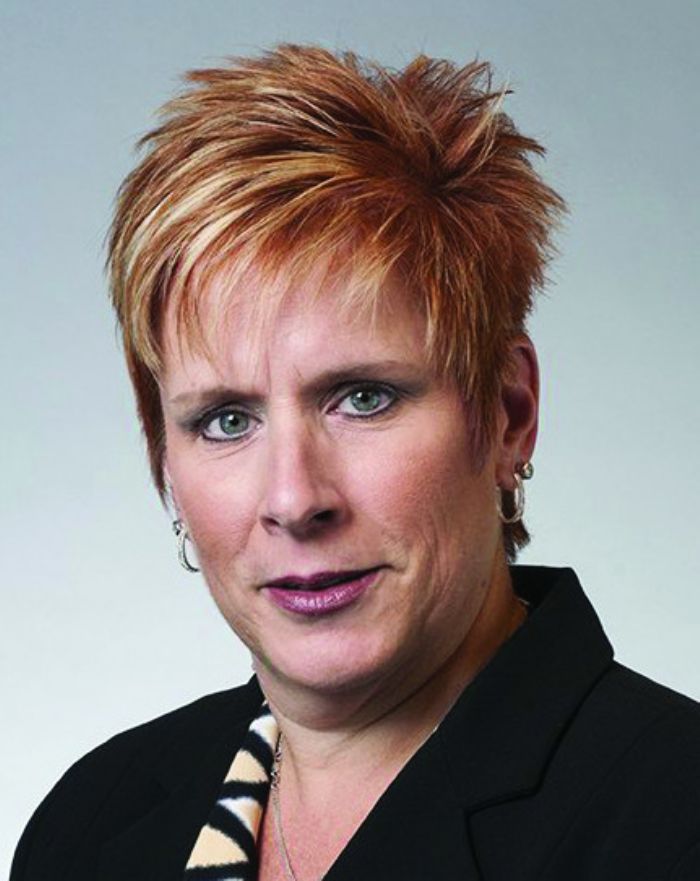 Many feel that manufacturing was the foundation on which the country was built and although the industry continues to be unpredictable and challenging—to say the least—it is experiencing a renaissance. So notes keynote speaker Laurie Harbour, president & CEO of Harbour Results Inc. In her opening keynote presentation, Harbour will discuss new manufacturing technology and software, the importance of having access to data, and how process improvements are enabling the best companies to drive continuous improvement and, as a result, their competitiveness.
Many feel that manufacturing was the foundation on which the country was built and although the industry continues to be unpredictable and challenging—to say the least—it is experiencing a renaissance. So notes keynote speaker Laurie Harbour, president & CEO of Harbour Results Inc. In her opening keynote presentation, Harbour will discuss new manufacturing technology and software, the importance of having access to data, and how process improvements are enabling the best companies to drive continuous improvement and, as a result, their competitiveness.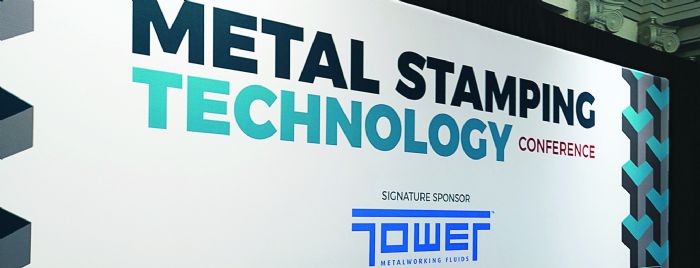 Agenda at a Glance
Agenda at a Glance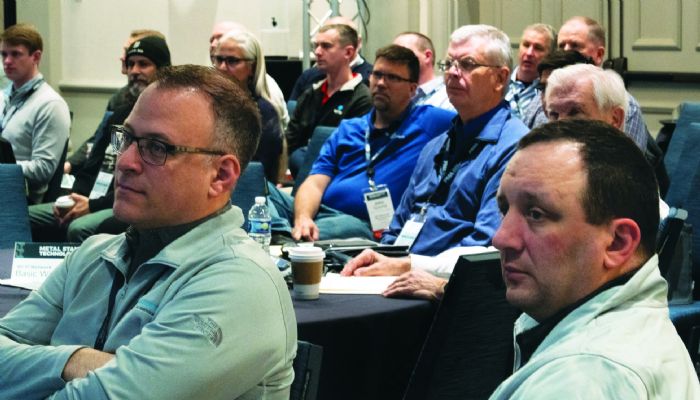 Keynote: War of the Words: A Summary Presentation of the Technical Aspects of Competing Materials for Autobody Structures, Christopher Kristock, vice president, automotive program, American Iron and Steel Institute
Keynote: War of the Words: A Summary Presentation of the Technical Aspects of Competing Materials for Autobody Structures, Christopher Kristock, vice president, automotive program, American Iron and Steel Institute
